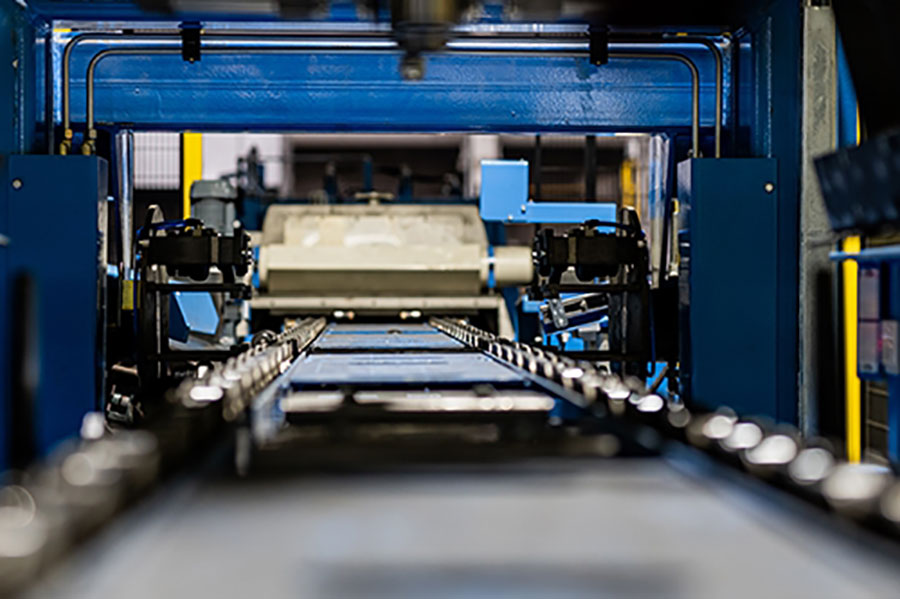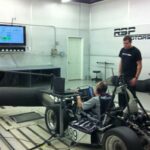Downtime: A Manufacturer’s Biggest Challenge
In a recent A3 Webinar, our own Adam Coulson was invited to talk about one of the worst case scenarios in manufacturing, downtime. Whether due to scheduled maintenance, upgrades, equipment failure or parts shortages, downtime causes lost profits, order delays, and unhappy employees and customers.
A3 tapped into the expertise of industry experts to get their insights on downtime and ways to mitigate it.
- Moderator Clarissa Schwendeman, Director of Marketing for A3, the Association for Advancing Automation
- Jim Beretta, President of Customer Attraction industrial marketing, who has worked extensively in the automation and robotics industry
- Tom Stocker, Director of North American Sales, Yaskawa America, Inc
- Adam Coulston Automation Department Manager, ARMO
- Mike Armstrong, Global Director, ABM and Continuous Improvement, After Sales and Service with ATS Automation Tooling Systems Inc.
Downtime causes lost time, lost profits, lost productivity and increased stress. While some downtime is scheduled, such as for routine maintenance or upgrades, reactive downtime, whether caused by machine breakdown, supply chain issues, labor disputes or natural disasters (or global pandemics), the goal is to limit reactive downtime.
Adam Coulson, said one of the most straightforward ways to limit downtime is through training and data collection and analysis that allows the development of proactive strategies to limit downtime and increase productivity. Mike Armstrong of ATS Automation Tooling Systems added that data takes an operation from “I think this is happening” to “here’s what happened and what we need to do to fix it.”
Training and Downtime
Training is an important component to limiting downtime, especially after a new installation when employees are still learning. Jim Beretta stated that often on a new installation, downtime can be caused by something as simple as an employee adjusting a setting after installation, which impacts the performance ramp-up.
Most issues arise within the first 90 days after installation as employees are still learning. Both the OEM and integrator can offer training, as it is critical that employees understand how both the equipment and the systems work so they understand what they need to do if there is a problem.
Training also increases confidence and reduces employee stress and apprehension, especially if it is a first experience with robotics or automation. The third shift often has high employee turnover, and skeleton resources. If an employee knows how to troubleshoot and problem solve, downtime can be reduced or eliminated. All operators should receive equal access to training and resources.
Training should be redone periodically to ensure all operators understand how to safely and efficiently operate the machinery. Armstrong recommends including planned training as part of the health check.
In addition, knowledge videos and information can be incorporated right at the machine, accessible by QR code that operators can access with their own devices. This provides both continuous learning and troubleshooting and problem solving.
Reactive and Predictive Maintenance
One of the biggest industry trends in recent years has been the shift from reactive “something broke and I fixed it” maintenance to predictive maintenance. While preventive maintenance is still important, it was based on the estimated Overall Equipment Effectiveness (OEE). Tom Stocker of Yaskawa stated their organization has been focused on downtime for the last five years, collecting data for predictive maintenance. Devices “check” their own health and send alerts for maintenance issues before the device fails so that predictive maintenance can be done strategically.
Coulson added in an ideal world manufacturers would have all the data available for a new piece of equipment prior to install. However, since it is impossible to simulate all situations in runoff testing, often “failure” issues are only flagged after installation. Therefore it’s important to have some kind of manufacturing execution system that can gather data, understand and learn from it. It’s also important to have a good sense of what spare wear parts are required and implement an inventory control system for those parts.
The Costs of Downtime
Tangible costs such as lost revenue, piece price and inventory storage costs are easy to calculate, said Coulson. What is harder to factor, and often overlooked are the soft costs of downtime. For example, Armstrong cited the employee experience and stress that downtime causes—the “Is it fixed yet”, with people hanging over the operator’s shoulder, waiting for resolution. Stocker added downtime increases stress on maintenance staff if machines are unreliable and potentially cause good staff to leave.
Coulson added when employees are constantly being pulled from elsewhere to “fight fires”, that erodes the innovation mindset and motivation.
Another underestimated cost is “line starvation” as productivity further down the assembly process is starved because of the downtime up the line. It isn’t always immediately apparent as there could be sufficient inventory to keep producing for a time, but will eventually slow or stop. Once the downtime is resolved, it can be a significant delay before the whole assembly line is back to full capacity.
The Evolution of Preventive Maintenance
One of the biggest differences between preventive and predictive maintenance is timing. Preventive maintenance typically follows a set schedule based on hours of use or cycles, whereas predictive maintenance takes into account the operating conditions of the individual machine. A part may need to be replaced more or less frequently, depending on the operational environment. Predictive maintenance uses the “health check” data on critical control points can circumvent unexpected downtime because a part failed prior to the next preventive maintenance check.
Data has changed how maintenance is approached and it has become more of a partnership between equipment manufacturers, systems integrators, customers and suppliers to keep the equipment running, said Coulson. Downtime due to maintenance is now 5 percent predictive and 7 percent reactive.
Inventory and Spare Parts
Spare parts inventory can be challenging. On the one hand, most systems integrators and manufacturers suggest allocating three to five percent of the equipment capital expense to consumables and wear parts.
Predictive maintenance allows companies to reduce inventory, ordering parts only when required rather than having it on-hand just in case. In many cases, custom part insurance is available if the part fails, but custom parts often have a long replacement lead time, and supply chain issues post-COVID-19 have increased the delay.
Stocker advised it is often a balancing act between keeping parts on-hand “just in case”, and risking they becoming obsolete or unusable, and risking the downtime waiting for the replacement part to arrive.
Many parts have become standardized, and may be available on another machine in the operation, allowing downtime to be minimized by swapping the part from another part of the factory. Further, plants are “parts swapping” and pooling standard components so that parts are shared among the operations and are shipped to where they are needed from within the organization. Coulson suggested companies can keep a standard components list in a central location for use by any of the sites within the organization.
But what happens if that stockpile of parts becomes obsolete? This can occur when a company stops making a product, upgrades machinery, or a business line is sold. One solution is to contact the OEM to buy back the obsolete spare parts. OEM still service older equipment and those parts can become more difficult to locate. Components or panels can be repurposed.
The OEM can also put companies in touch who can do a swap or sale of the parts directly. Armstrong advised that systems integrators may also stockpile standard components to keep cost down.
Lessons from COVID-19
Covid-19 shut down the world and forced many industries to find creative solutions, including the automation sector. How to complete acceptance testing or repairs when only essential personnel were allowed in premises, and stay-at-home orders existed across the globe?
Enter virtual and augmented reality technology, which allowed engineers and technicians to “see” what operators were seeing without physically being on-site. Google glasses, FaceTime and Zoom became the norm for simple troubleshooting, especially for new installs. For example, AR/VR could pinpoint when a setting had been changed, or someone had turned off the vision system. It allowed for faster response time during a pandemic, and has left to widespread adoption post-COVID.
Factory Acceptance Testing and run-offs are now routinely completed by Zoom call. HMI upgrading can be completed with a combination of AR/VR and remote support.
Of course, remote access raises concerns from an IT security standpoint. OEM can often extract data but cannot transmit data, and edge server solutions are become more commonplace. Data can be uploaded to a cloud server in collaboration with the company’s IT department to ensure safe uploads. IT safety can be incorporated into the new build, and there are workarounds for older equipment.
Coulson suggested design failure mode planning should be developed in tandem with the OEM so that predictive maintenance will be as accurate as possible.
Mitigating downtime will continue to require agile creative solutions, including technology adoption, use of data and rethinking how preventive or predictive maintenance is conducted. Incorporating training into the health checks of machines ensures all employees are fully trained. While there will always be conflict between short and long-term capital expenditures, rethinking how to approach critical component parts and spare parts can minimize downtime. Strategies such as central stockpiling of common parts, or partnering with other manufacturers with the same equipment to share resources can benefit the industry as a whole.
You can view the webinar on demand at this link:
https://www.automate.org/webinars/downtime-a-manufacturers-biggest-challenge
We thank Jim and the Association for Advancing Automation for including us on this important panel discussion. If you would like to get in touch with us at Armo and discuss your machinery, uptime, downtime or spare parts issues, contact us here.




